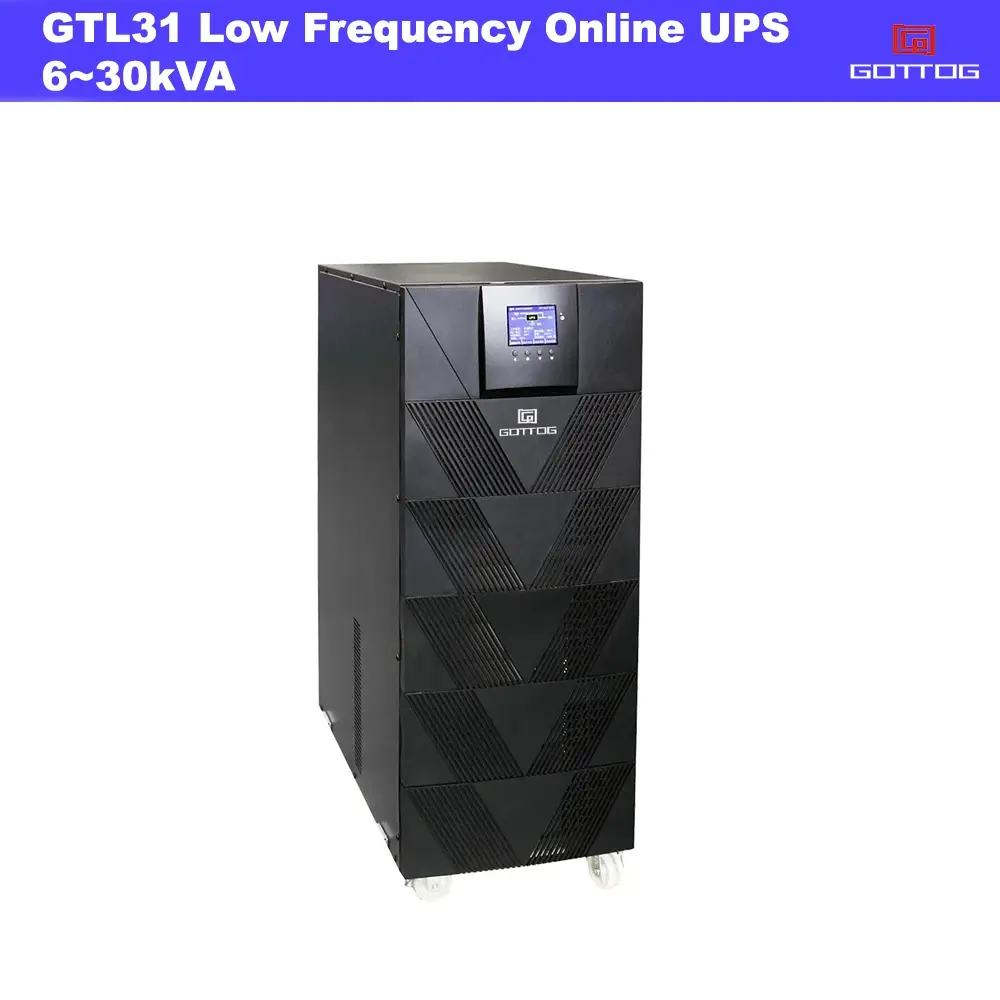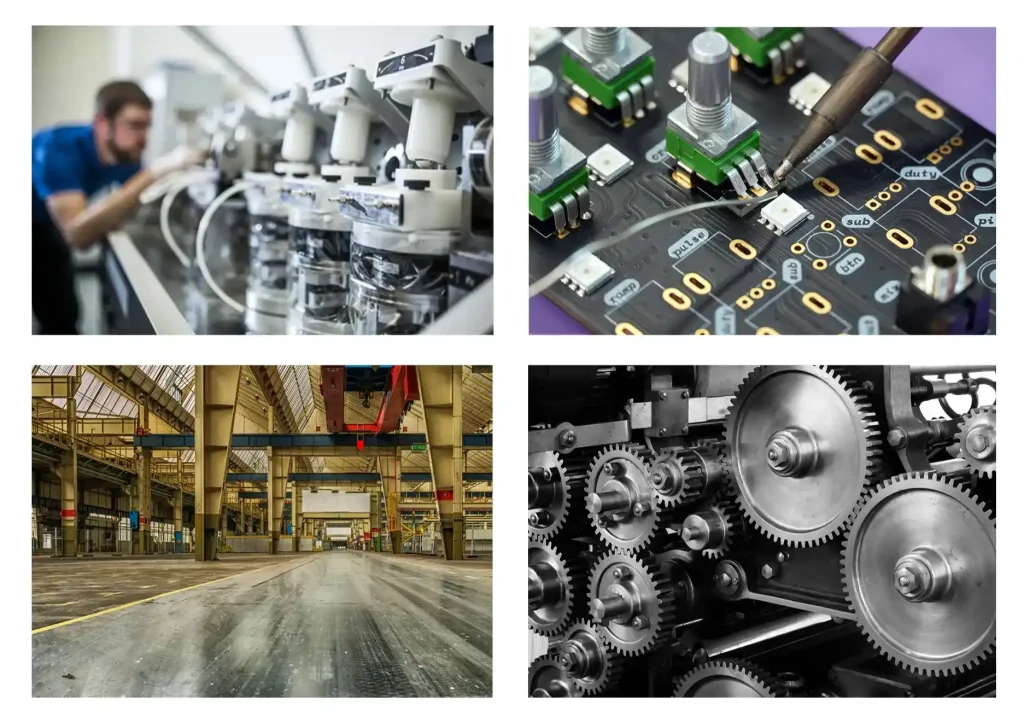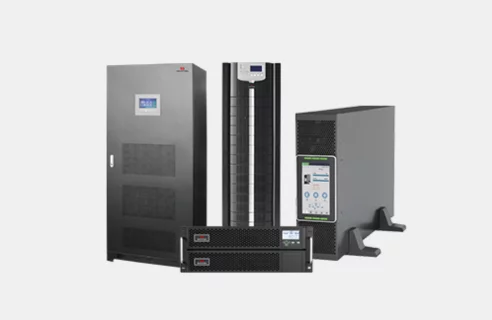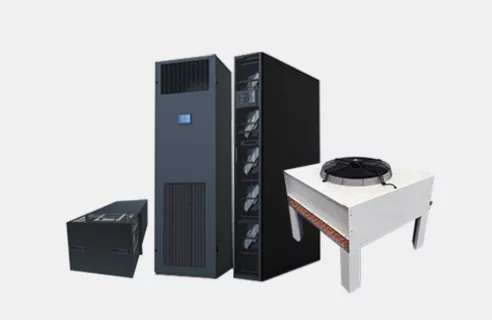In critical sectors like data centers, medical systems, and industrial manufacturing, Low Frequency UPS units serve as the core power protection equipment, directly determining business continuity. However, with a plethora of products on the market, what defines a good low frequency UPS? This article will dissect across three key dimensions: core architecture, performance metrics, and scenario adaptability, providing industry users with the most valuable selection guide of low frequency UPS.
I. Technical Benchmarks for Core Architecture
Double-Conversion Online Topology: A good low frequency UPS must first feature a double-conversion online topology, with a low-frequency transformer as its core power conversion component. This design enables electrical isolation, effectively blocking grid-side disturbances like harmonics and surges from affecting the load, achieving complete electrical isolation between the grid and the load. When grid voltage fluctuates, frequency deviates, or power fails, the inverter immediately takes over power supply with a transfer time of 0ms. This zero transfer time is a critical requirement for scenarios like medical facilities and data centers. Industry data shows that double-conversion low-frequency UPS units reduce failure risk by 78% compared to standby UPS systems.
Standard Low-Frequency Output Isolation Transformer: The isolation transformer is the key feature distinguishing low frequency UPS from high-frequency UPS. The low-frequency isolation transformer built into models like the GTL31 low frequency UPS suppresses grid spike interference while isolating load harmonics from affecting the grid. Research indicates that low frequency UPS units with isolation transformers can control Zero Ground Voltage below 1V in industrial environments.

II. Core Metrics for Power Processing Capability: From Compatibility to Stability
- Wide Input Voltage Range Tolerance: High-quality low frequency UPS units require strong tolerance to grid fluctuations, maintaining normal operation within a certain range of input voltage variations and frequency deviations without frequently switching to battery mode. Their filter circuit design must effectively suppress common-mode and differential-mode interference from the grid, keeping the Total Harmonic Distortion (THDi) of the output power at low levels to provide a clean power environment for sensitive loads. This adaptability ensures compatibility with complex grid conditions in industrial settings, preventing equipment malfunctions caused by voltage fluctuations.
- Adaptability to All Load Types: A good low frequency UPS should be compatible with various loads, including inductive, capacitive, and non-linear types. It must possess sufficient instantaneous overload capability to handle the inrush current during startup of inductive loads like motors and transformers. Facing harmonic currents generated by non-linear loads, its output filter network must effectively suppress voltage distortion. Ideally, the UPS should maintain stable output voltage magnitude and frequency despite load changes, with minimal voltage fluctuation and short recovery time during dynamic responses, ensuring connected equipment remains unaffected by power disturbances.
- Redundancy and Fault-Tolerant Architecture: High-level low frequency UPS units require system-level redundancy capabilities. This includes N+1 parallel configuration for power modules, allowing the system to operate at reduced capacity without interruption if a single module fails. Control circuits should employ master-slave backup with hardware logic redundancy to ensure bumpless switching. Cooling systems often use redundant fan configurations paired with intelligent temperature control strategies to prevent overheating failures due to cooling loss. This redundancy design not only enhances system reliability but also ensures overall system operation during partial component maintenance, improving availability in engineering applications.
III. Adaptability Metrics for Engineering Applications: From Environmental Suitability to Maintenance Ease
- Wide Temperature Range & EMI Resistance:
A good low frequency UPS must exhibit strong environmental adaptability, operating stably across a wide temperature range and tolerating factors like humidity and dust. In complex environments like industrial sites, the equipment must meet relevant electromagnetic compatibility (EMC) standards through its design, avoiding interference with surrounding devices while resisting external electromagnetic interference (EMI) to ensure control logic stability. - Intelligent Maintenance Design:
Modern high-quality low frequency UPS units need comprehensive monitoring systems, displaying real-time operational status, fault information, and historical data via LCD screens or network interfaces. Their management software should support remote monitoring and early warning functions, enabling maintenance personnel to identify potential issues proactively. For maintenance ease, modular design allows rapid replacement of key components, while intuitive indicator layouts simplify on-site fault diagnosis, reducing downtime and enhancing lifecycle efficiency.

Low frequency UPS units meeting contemporary demands must also focus on energy efficiency optimization: cooling designs should balance efficiency and noise control, complying with green data center or industrial energy-saving standards, achieving harmony between technical performance and environmental requirements.
A good low frequency UPS is the product of deep integration between power electronics technology and engineering application requirements. It must not only demonstrate technical advancement in topology and core components but also meet the stringent demands of various scenarios across dimensions like reliability, compatibility, and environmental adaptability. As industrial automation and digital transformation advance, high-quality low frequency UPS units will become the core power protection equipment for critical loads in smarter, more efficient, and more reliable forms. Their ultimate technical value lies in their ability to provide solid support for users’ business continuity.
Explore real-time deployment cases of the 15-cabinet standard unit:
🌐 https://www.gottogpower.com
Request industry-specific energy efficiency optimization calculation sheets:
✉️ info@gottopower.com
Téléphone/Whatsapp/Skype/Wechat : 0086 18326071160 ; 0086 19746645428.






